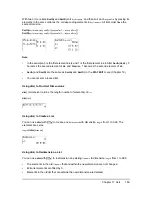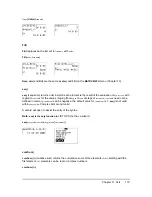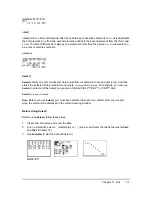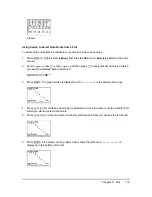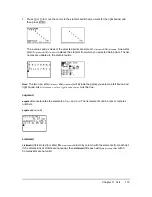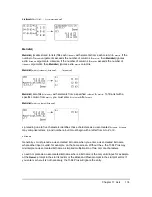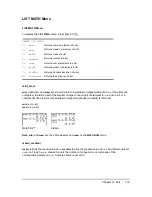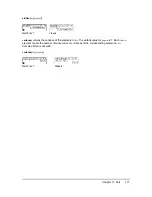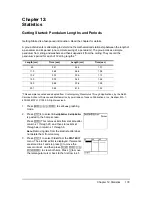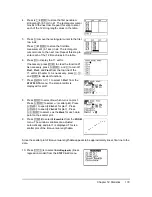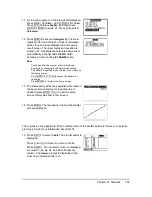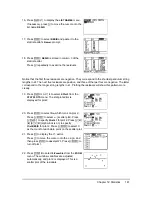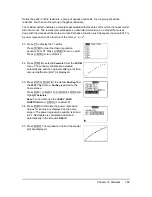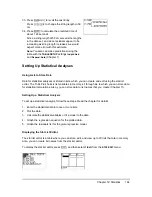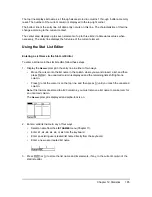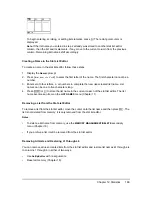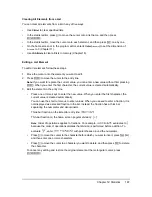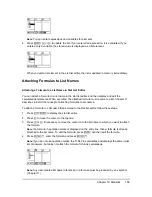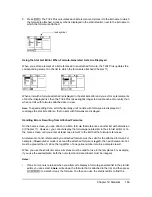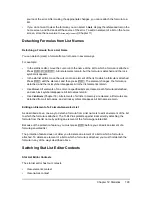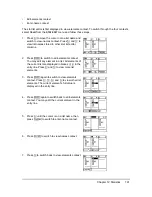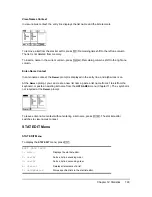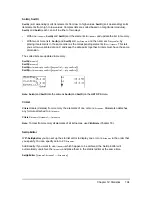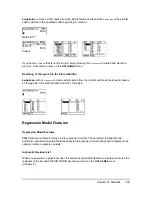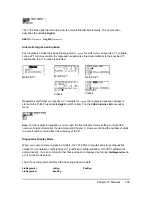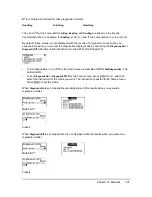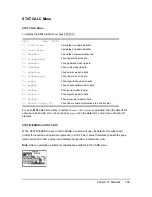
Chapter 12: Statistics
183
The new function y=.192x
.522
appears to fit the data well. To get more information, examine a
residual plot.
The new residual plot shows that the residuals are random in sign, with the residuals increasing in
magnitude as the string length increases.
To see the magnitudes of the residuals, continue with these steps.
Now that you have a good model for the relationship between length and period, you can use the
model to predict the period for a given string length. To predict the periods for a pendulum with
string lengths of 20 cm and 50 cm, continue with these steps.
28. Press
o
to display the Y= editor.
Press
| Í
to deselect
Y1
.
Press
} Í
to turn off plot 1. Press
~ Í
to
turn on plot 2.
Note:
Step 19 defined plot 2 to plot residuals
(
RESID
) versus string length (
L1
).
29. Press
q
9
to select
9:ZoomStat
from the
ZOOM
menu. The window variables are adjusted
automatically, and plot 2 is displayed. This is a
scatter plot of the residuals.
30. Press
r
.
Press
~
and
|
to trace the data. Observe the
values for Y at each point.
With this model, the largest positive residual is
about 0.041 and the smallest negative residual is
about
L
0.027. All other residuals are less than 0.02
in magnitude.
31. Press
~
1
to display the
VARS Y-VARS
FUNCTION
secondary menu, and then press
1
to
select
1:Y1
.
Y1
is pasted to the home screen.
Note
: You can also use the
YVARS
(
t a
)
shortcut menu to select
Y1
.
32. Press
£
20
¤
to enter a string length of 20 cm.
Press
Í
to calculate the predicted time of
about 0.92 seconds.
Based on the residual analysis, we would expect
the prediction of about 0.92 seconds to be within
about 0.02 seconds of the actual value.

